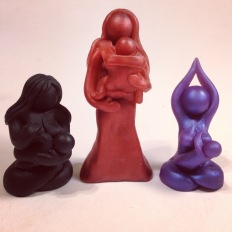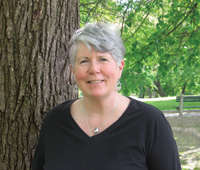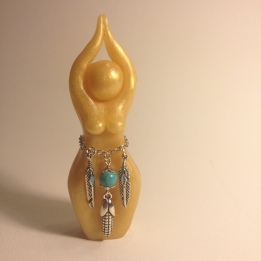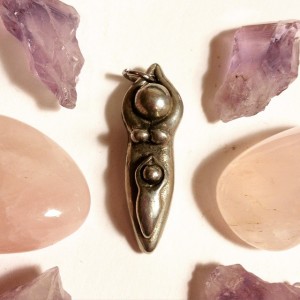 Do you know how many days have gone by in which I’ve said: “well, I didn’t write my dissertation today?”
Do you know how many days have gone by in which I’ve said: “well, I didn’t write my dissertation today?”
This past Monday I got to say: I *DID* WRITE MY DISSERTATION TODAY!!!!!!!!!
It may be a first draft rather than a final submission, depending on suggestions from the reviewers, but there is a huge qualitative difference between someone who is writing a dissertation and someone who has submitted a dissertation and who might need to make revisions. It is 187 pages and 88,000 words and involves one year of original research with 100 pages of collated research results. Five years of classes, study, and contemplation, with also doubling my amount of offspring during this time. I grew this dissertation project at the same time I was growing Tanner from a tiny newborn to a walking, talking toddler. And, I feel like I just pushed out the biggest baby of my life. I cannot even describe the energy expenditure this required of me. I feel so satisfied and very, very proud of myself.
At Red Tent last week, when we passed the rattle, we each had a moment to share something we needed to be “compassionately witnessed.” After making a good effort at doing daily dissertation work throughout December, I’ve been semi-half-hearted on it since, averaging one “good” day of intensive work on it per week. I was hoping to have it finished before we go on a trip this month, but I was feeling so strained and drained and tense that adding it to my to-do list felt almost cruel and possibly ridiculous. When it was my turn for compassionate witness, I shared with the circle that I had reached a point in which I could no longer distinguish whether finishing my dissertation was self-care or self-harm.

After making manifestation bracelets together at Red Tent.
Now, in hindsight, I recognize the “transition” stage. I’ve known for a while now that it is part of my personal process with big projects to have to be able to have a time and a place in which I am able to say, I don’t know if I can do this. And, to have that fear and self-doubt, and vulnerability simply witnessed. And, then, do that thing anyway. It is hard to find a space in which this is “allowed.” Very often well-meaning suggestions are to cut myself slack, to lower my expectations, or to give myself a break. I have discovered that just like these comments are not actually helpful to a woman in labor, they are not helpful to me in “labor” with other big projects either. In fact, I think there is a secret “dark” side to many popular self-care messages, primarily because what we sometimes might pass off as “self-care” is actually a “shadow comfort” (to borrow Jen Louden’s term) and is actually a meanings of inhibiting ourselves, holding ourselves back, or sabotaging ourselves (or those around us, when we offer the “out” of quitting or not following through…of letting ourselves down). When I was able to let out the fear and doubt, only for a few minutes, and have it simply received, it was as if something unlocked within me and suddenly I knew I had it in me after all. Only a few days later, after several focused bursts of intense writing, I submitted my completed project.
Anyway, a long story just to make this point: I felt SO good after submitting it. I may never have been so proud of myself. I was giddy, thrilled, exhilarated, excited, and exuberant. “What if I had QUIT?!” I yelled, “then I would never have gotten to feel like THIS!” When I lower expectations, sure, I might meet them, but when I keep my expectations high…and meet them. There is nothing that can replace that feeling. And, guess what, it keeps stretching me to reach just a little higher and a little higher. And yes, the self-harm shadow side of continuous life-stretching is that I can be trapped into “striving and striving and never arriving,” but the self-care amazing life side, is that I prove to myself that I can do incredible things and that I accomplish that which may have felt impossible for a time.
Bringing it back to birth, I read this post about ten things not to say to a woman in labor and the first reminded me of my own big “push” to finish the dissertation and how compassionate witness is infinitely more valuable than sympathetic shadow comfort enabling:
Scenario 1: If a woman is trying to make a rational and educated decision while in labor (a very difficult thing to do when in pain!) about whether or not to get an epidural (which is a big deal, by the way) by saying “you don’t have to be a hero” is playing to her emotions and vulnerability which isn’t fair. If she’s questioning this choice instead of immediately signing up for anesthesia, she likely has a reason for the hesitation. I guarantee she doesn’t want an unmedicated birth to become “a hero”. Maybe she was hoping for a natural birth, or wants to reduce the chance of further interventions like pitocin, or maybe she’s wanting the best start for her baby. I don’t know. But by saying “you don’t have to be a hero” to help her make a decision is basically blowing her off when she is in a very vulnerable position. It’s a low blow.
Source: 10 Things to NEVER Say to a Woman in Labor | Mother Rising
And, here’s the deal…women in labor and postpartum are heroes. They are incredible. They are amazing. We should never deny them that knowledge, particularly if all we are offering in return is a patronizing platitude masquerading as compassion. This “One Day Young” photo project captures that sheroism:

These goddesses headed to a WIC peer counselor’s office this week.
“In those first 24 hours, it’s like this warrior comes out in women,” says Jenny. “They gain this inner strength to protect the child and you can see it in the photos. “They’re like those heroic pictures of soldiers on the battlefield or the footballer after the match, still full of the adrenaline of achievement. This moment isn’t often captured in women, but what they’ve just achieved is just as important as that goal or that battle, and that moment deserves to be recorded and celebrated in the public arena.”
Source: Empowering Photo Project ‘One Day Young’ Reassures Women That Childbirth Is Nothing To Fear
At the same time, birth can be very hard work and the recovery can be intense and long-lasting. Culturally, while we may minimize, invalidate or deny women’s power, strength, and amazingness in birth, we also often minimize, invalidate, and deny their vulnerability after birth.
We don’t talk about postpartum pain — bleeding, stitches, not being able to stand upright, or easily walk around. We don’t talk about the struggles of early breastfeeding: cracked and bleeding nipples, mastitis, and worries about producing enough milk. We are only beginning to talk about postpartum depression and anxiety. And it almost seems as if new fathers and adoptive parents don’t matter at all. The rhetoric from those who don’t want change paint a rosy picture of motherhood, but the realities of these anti-family policies are much more grim. In a recent TED talk, I share a number of heart-wrenching personal stories from women who have suffered as a result of having to return to work too soon.
Source: Maternity Leave Policy Postpartum Pain – Susan Crowe
After submitting my dissertation, I was heard to say that I felt like I needed a long nap and maybe several large gifts. After the intensity and unpredictability of giving birth, a ceremony might be in order, either a sealing ceremony like I experienced, or a birth reclaiming ceremony as is described in this article:
“I wasn’t at the birth, but it was super quick and the mother felt traumatised. I came in on a Monday, and the baby looked a little pinched. I asked the mother about feeding and she said she thought it was going okay. I offered to change the baby’s nappy – I took it off and it was bone dry. I asked how long it had been on and it was over 12 hours. The maternal health nurse was due over that day, so we had a bit of time to suss what was going on, since I was a breastfeeding counsellor as well. From chatting, we realised her milk had not come in and the baby was clearly not getting anything.
The mother was super stressed and her baby was about a week old — and clearly not in fabulous shape. I talked about a birth reclaiming ceremony and we ran her a lovely warm bath. It was daytime, so we closed the curtains and played soft music. As she climbed into the bath, I saw her high, tense shoulders drop right down and she let out a big sigh. When she was ready, I stripped her baby, and placed the baby on her chest. We sat quietly, not saying a word. The mother started to cry, then sob, totally overwhelmed by the responsibility of being a parent and not doing a good enough job. All the while, looking at her sleeping baby, holding her.
As the mother eventually finished crying… her milk started to roll down her breasts. She looked at me, so surprised, and said, “Is that what its meant to look like?”
Source: Birth Reclaiming Ceremony – Could It Help You Heal? | BellyBelly
Finally, I like to share this link. I haven’t actually watched any of these, but for people who like TED Talks, this sounds like an interesting round-up!
11 TED Talks for Pregnancy and Birth — Tulsa Birth Doula, Bethanie Verduzco, CD(DONA) – Hello Sunshine Birth Services
 What else is up with me this week:
What else is up with me this week:
- The etsy shop is on limited inventory until March 1.
- I’ve been working on the materials kits for both the Red Tent Initiation and Womanspirit Initiation courses that I have coming up. They’re beautiful and I’m so proud of both of them. Every time I pack up a kit, I feel so thrilled. Both trainings begin March 21st and still have spaces available for registration if you’re interested!

 how individuals can make better health choices.
how individuals can make better health choices. State University, Case Western Reserve University and most recently West Virginia University. In 1998 she went into private practice with her husband, Tom, an OB/Gyn, in Morgantown, West Virginia. Here they devoted their lives to caring for women and bringing babies into the world in a gentle way. Patricia Harman still lives with her husband, Thomas Harman, in Morgantown, West Virginia. She recently retired from her thirty-five years of midwifery so she could write more books for people like you!
State University, Case Western Reserve University and most recently West Virginia University. In 1998 she went into private practice with her husband, Tom, an OB/Gyn, in Morgantown, West Virginia. Here they devoted their lives to caring for women and bringing babies into the world in a gentle way. Patricia Harman still lives with her husband, Thomas Harman, in Morgantown, West Virginia. She recently retired from her thirty-five years of midwifery so she could write more books for people like you!

 drawings illustrating a variety of positions and concepts. This new fifth edition has lots of black and white photos as well. The fact that the book is co-authored by a world-renowned doula, a nurse/lactation consultant, a nurse/childbirth educator, a social worker, and a physical therapist, means it is an interdisciplinary resource benefiting from the skills and professional experience of each co-author. Childbirth educators and doulas as well as pregnant couples will want to check out the companion website which has a plethora of pdf handouts available on numerous topics including
drawings illustrating a variety of positions and concepts. This new fifth edition has lots of black and white photos as well. The fact that the book is co-authored by a world-renowned doula, a nurse/lactation consultant, a nurse/childbirth educator, a social worker, and a physical therapist, means it is an interdisciplinary resource benefiting from the skills and professional experience of each co-author. Childbirth educators and doulas as well as pregnant couples will want to check out the companion website which has a plethora of pdf handouts available on numerous topics including 















